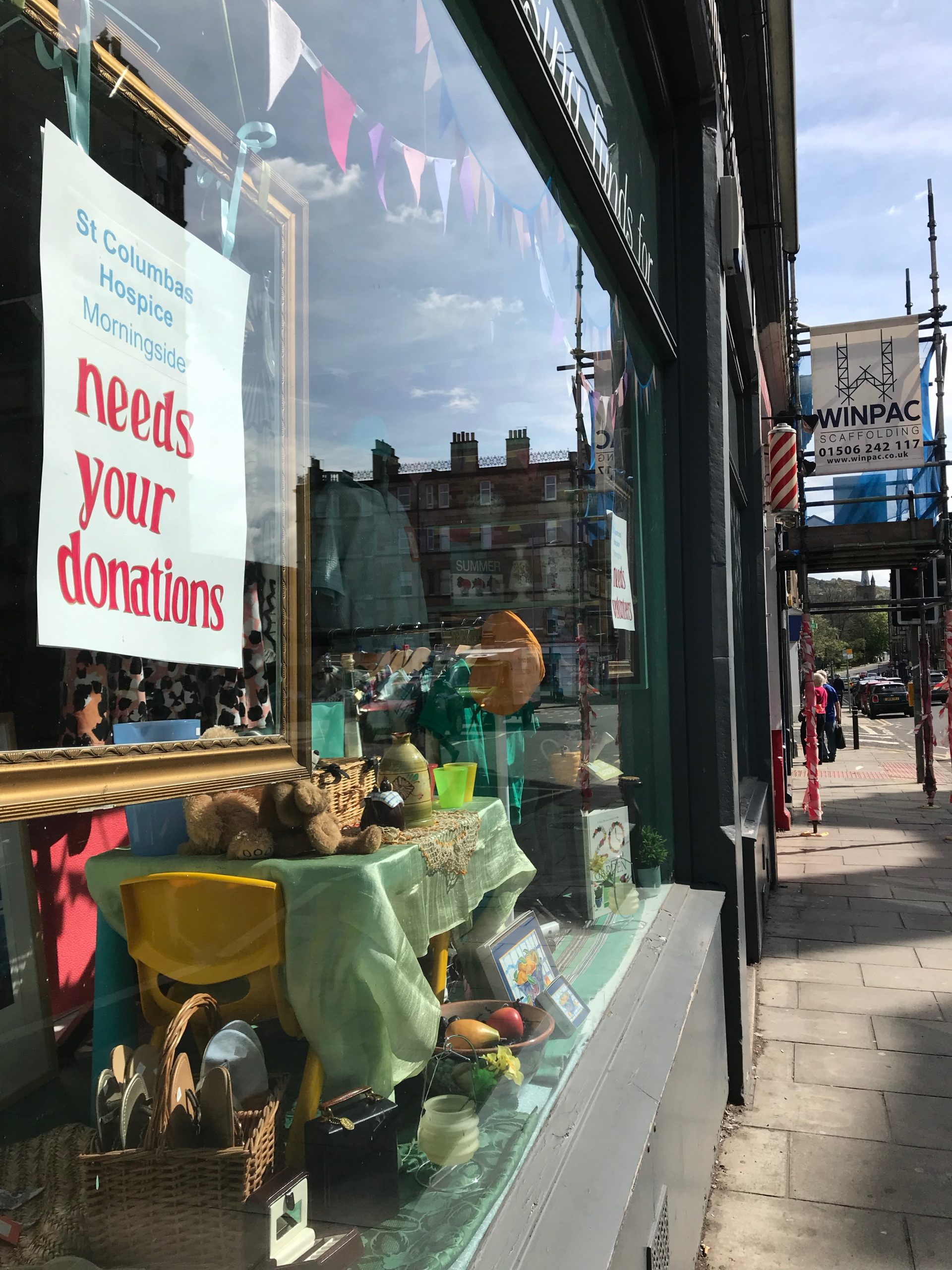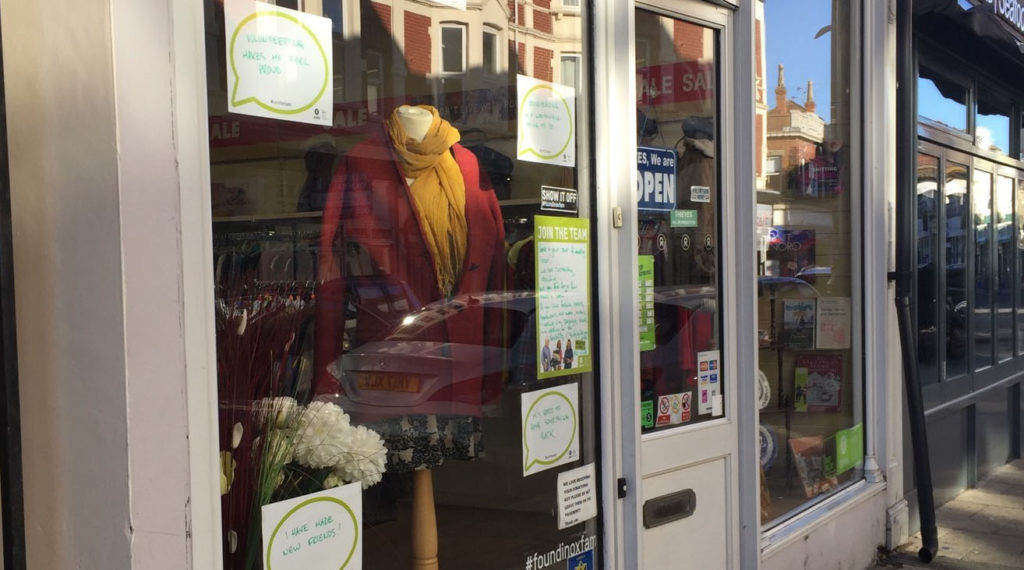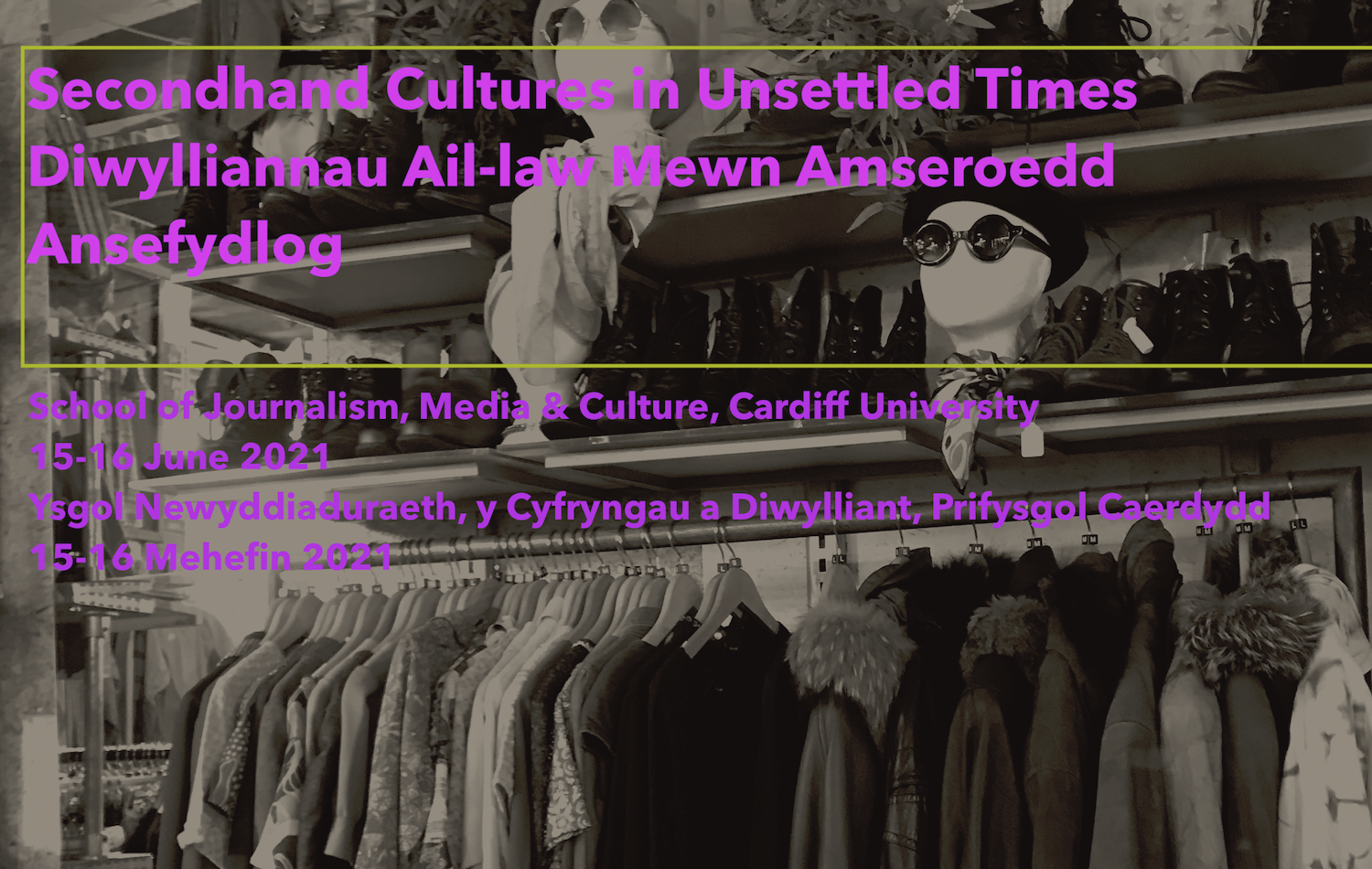Selected Workshop Recordings
Online Symposium, 15-16 June 2021
Introduction and Workshop – Well-Worn: Falling Back in Love With Our Clothes
Welcome and Introduction to the Symposium (with co-organisers Jen Ayres, Triona Fitton, Alida Payson and Kamila Buczek)
Wendy Ward (Independent practitioner / author)
Show and tell and reflection session Participants can bring (or wear!) to the workshop an item of well-worn and/or well-used clothing. It will also be useful to have on hand a couple of sheets of white paper (minimum A4 size) and a thick marker, pen, pencil or crayon in a dark colour.
BIO: Wendy Ward is a writer, designer, maker and educator. She has worked as a designer in fast fashion and for a small sustainable brand. She explored novel ways to recycle textiles for her MA and in 2007 she moved into education and has taught numerous clothing focused sewing classes, workshops and courses with adults. Wendy has also written four best selling sewing books and her fifth, publishing in June, teaches techniques for sewing more sustainably.
Keywords: Role of creativity, circular economy, longevity, durable design, garment lifecycle, object-centred, story telling, used clothing
This paper and proposed workshop explore the potential for building more durable relationships with our clothes by investing memories, patina and stories into everyday garments.
I am researching how greater interaction with our clothes can build better relationships with them. My research consists of the following stages:
- Documenting – to honour the beauty inherent within worn clothing. To celebrate the patinas, memories and stories worn clothes retain. Recording through a variety of media, including drawing, photography and storytelling.
- Embellishing – printing onto garments and printing from garments, exploring the potential of using the garment as both subject and tool.
- Disassembling – to explore end-of-life options for garments; removing parts, taking whole garments apart, unraveling threads from one garment to sew back into itself or another.
To be presented alongside an object-centred workshop. Attendees are invited to bring along one item of well-used, well-loved clothing and a story or memory to share about the item. Through the shared experience of each other’s precious garments we are reminded of the value of the existing above the new and the importance of being a “guardian” rather than a consumer.
If we were able to re-frame the common view of clothes with each piece considered beautiful in its own right and offering us a blank canvas on which to imprint our own taste and meaning, could it help us to rediscover a more durable and meaningful relationship with our clothes?
FABSCRAP Textile Journeys
(begin at 2min mark!)
Dhamar Romo Chavez (FABSCRAP Community Coordinator)
FABSCRAP Textile Journeys: One-stop textile reuse and recycling enterprise providing fabric scrap pick-ups, sorting, consolidation, and recycling in New York City
BIO: Dhamar Romo Chavez is FABSCRAP’s Community Coordinator. In this role, she leads volunteer activities, educational outreach, digital workshops, and material donations. Through a diverse background within the fashion industry in areas such as design, retail, and reuse, she has experienced the joys of re-constructing second-hand clothing and the wasteful nature of the global retail industry.
FABSCRAP is a textile recycling non-profit working with the fashion, interior, and entertainment industries in New York City to collect their unwanted raw materials and make them available for recycling and reuse. With an engaged community of creatives, these materials are sorted, and reused by all types of makers such as students, artists, quilters, teachers, and small business owners. During this presentation, Dhamar Romo Chavez, FABSCRAP’s Community Coordinator, will describe the flow of materials through FABSCRAP’s innovative non-profit model and the impact of reusing and recycling textiles that were previously destined for landfills.
16 June 2021
Design Sprint Workshop: Secondhand futures, or what next for secondhand research & praxis?
Led by CharioCity team
The design sprint led by CharioCity team to explore the future potential of the physical charity hop space through the lens of systemic design education project briefs.
ABOUT THE PROJECTS AND TEAM:
The vision of WCTD is to galvanise the collective ambitions and goals of people, organisations and businesses to reach a fully circular textiles world by 2050. What does fully circular by 2050 mean?
• Shared textile resources, in the form of products and raw materials, are kept in continual circulation.
• Virgin resources are replaced with circular materials.
• Dignity, equity and equality, for the people involved in all parts of the circular value chain.
The WCTD mission is to provide a framework for circularity stakeholders to develop and deliver a collaborative, evolving roadmap and to chart circularity’s momentum annually on 8 October until 2050.
The CharioCity Workshops: Developing systemic design education approaches for the UK’s charity shop’s fashion and textile value chain.
This is a University of the Arts London HEIF-funded Covid-19 Recovery project, in partnership with Circle Economy Amsterdam, for the World Circular Textiles Day 2050 initiative. How has Covid-19 affected the UK charity shop sector, in terms of clothing and textiles? How can design education help to ‘build-back-better’? The project seeks to explore the impact of Covid-19 on the second-hand/charity textiles sector in the UK, by bringing together key stakeholders from the UK’s second-hand clothing sector to discuss ideas around how to recover from the impacts of the pandemic. A report for educators will be launched on 8 October 2021.
- Rebecca Earley, CharioCity Workshops Project lead, is Professor of Sustainable Fashion Textile Design and co-founder of Centre for Circular Design at Chelsea College of Arts, University of the Arts London. In October 2021 she co-founded World Circular Textiles Day 2050 with a team of like-minded collaborators who all want to create clear roadmaps for circular textiles, by drawing together current academic and industry research into inspiring, shared visions.
- Sanne Visser, CharioCity Workshops Project researcher, is a Material Design Researcher. She is PhD candidate, Research Assistant and Lecturer at Centre for Circular Design, Chelsea College, University of the Arts London. Her background and expertise are in Circular Design and Material Innovation with a focus on protein-based fibres.
- Charlie Dexter, CharioCity Workshops Project manager, has worked as a PA/EA/VA for over 10+ years and in that time, has experienced a vast variety of roles, industries, small and large corporations as well as private clients. Over the last year she has become a part of the World Circular Textiles Day vision and has been delighted to work as Project Manager helping to run the main, annual 8th October global event and the recent CharioCity project as well as helping to host these events. Alongside her passion for a circular world, her other passions is in helping people develop their mindset and personal growth; ‘Believing in yourself is the first secret to success’.
Day 2 Workshops:
Fashion Fictions Secondhand Safari
Author: Dr Amy Twigger Holroyd – Affiliation: Nottingham Trent University
Instructions: Together we are going to explore fictional worlds that have been submitted to the Fashion Fictions project, focusing particularly on worlds that feature secondhand clothes.
Worlds 1, 3, 6, 8, 10, 22, 24, 25, 26, 27, 31, 33, 41, 43, 44, 45, 46, 54, 55, 60, 64, 72, 92, 95, 106, 107
1) Take a few minutes to locate and read your five worlds.
2) Discuss: do the secondhand cultures and practices in these fictional worlds remind you of something in the real world? This might be historical or contemporary and could be based on your own experience/knowledge, or a paper from the conference.
3) Between you, decide: which one of the worlds would you most like to live in – or least like to live in – and why? Nominate one person to share your choice and reasoning when we return to the main room.
BIO: Dr Amy Twigger Holroyd, Associate Professor of Fashion and Sustainability in the School of Art & Design at Nottingham Trent University, is a designer, maker, researcher and writer. Her first book, Folk Fashion: Understanding Homemade Clothes, was published by I.B. Tauris in 2017. Amy’s research interests include participatory textile making methods, intersections between practices of crafting and practices of commoning, and post-growth fashion systems. Her Fashion Fictions project, funded by an AHRC Research, Development and Engagement Fellowship, brings people together to imagine and explore alternative fashion Worlds.
Fashion Fictions is a participatory research project that brings people together to generate, experience and reflect on engaging fictional visions of alternative fashion cultures and systems. The fictions, or Worlds, are framed as parallel presents, rather than speculative futures, and are guided by some loose parameters. These parameters specify that the fictions should describe sustainable and satisfying cultures and systems; explore social and cultural factors, rather than technological change; and focus attention on use and associated practices such as loaning and sharing, rather than production and conventional consumption.
Creating Fabric Scrap Twine: A Zero Waste Workshop
Authors: Kat Roberts – Affiliation: Cornell University
BIO: Kat Roberts is a second year Ph.D. student in the department of Fiber Science and Apparel Design at Cornell University. Her primary research interests are sustainable interventions in U.S. apparel production, with a particular focus on upcycling and waste diversion, and how technology intersects with hand crafts. Previous to beginning her studies at Cornell, she taught adult crafting courses, lectured in the Business and Technology of Fashion at CUNY’s New York City College of Technology, as well as authoring a number of craft books.
BYO fabric and scissors
In this workshop, I will demonstrate how to transform fabric scraps into a beautiful and useful twine. Even the most sustainability-minded practitioners often grapple with how to reduce, and ideally, eliminate the waste that is generated during the creative process. To achieve the goal of zero-waste often requires one to not only re-evaluate their consumption and disposal habits, but also to altogether reassess what they consider to be trash. It is with this vital recontextualization in mind that this workshop is grounded. Fabric scraps are a great place to start since they are a frequent byproduct of any work done with textiles. Engaging in the making of this twine is a highly accessible practice as the only materials required are fabric scraps and a pair of scissors. Additionally, it is extremely easy to produce and can accommodate a wide range of aesthetic preferences, making it an ideal entry point for beginners looking to approach sustainable-making practices. By the conclusion of this workshop, participants will be well on their way to having created a ball of twine. I intend to end the session by sharing a variety of examples of how the finished twine can be utilized. Anyone is welcome to join, however, those interested in participating will need to be prepared with their own fabric scraps and a pair of scissors.
Secondhand and the Tacit
10am EST/4pm BST
(Begin at 1:40min mark!)
Author: Dr Jules Findley – Affiliation: University of Brighton
BIO: Dr Jules Findley’s practice-based research is in embodied materiality, which has led to questioning in-depth areas of emotions around complicated grief and memory using the methodology of affect and repetition in making handmade paper. Jules gained her PhD Textiles from the Royal College of Art, School of Materials. Jules Findley has presented at international conferences and works as a practising installation artist and crafts person as well as Principal Lecturer at the University of Brighton in Fashion Communication. She has expertise in fashion, textiles, leather and paper making industries. In 2021 she is a co-investigator on UKRI-AHRC funded research into waste and sustainability, Sustainable Materials in the Creative Industries, (SMICI) in craft, fashion, textiles, accessories, leather and fine art sectors. collaborating with other researchers from Royal College of Art, University of Edinburgh and University of Plymouth.
BYO needle, thread, and garment in need of repair
There will be a short presentation of Secondhand and the Tacit, we will proceed with a workshop on examining the hidden and the explicit in secondhand clothing or textiles. The appeal of something second hand is the life it has lived before, a garment, a tablecloth comes with its own narrative.
Preparation – if you would like to join in: For our workshop please bring a needle and some thread, and bring a secondhand item that needs repair. You can choose to make your repair visible or hidden, and if you are making a repair hidden what will you hide in it? What will you conceal in your repair, could be an embroidered stitch?
During the sewing and repair there will be short readings of second hand and discussion of secondhand and the tacit throughout the workshop. If you don’t want to stitch, listen to the readings and enjoy the discussion.












